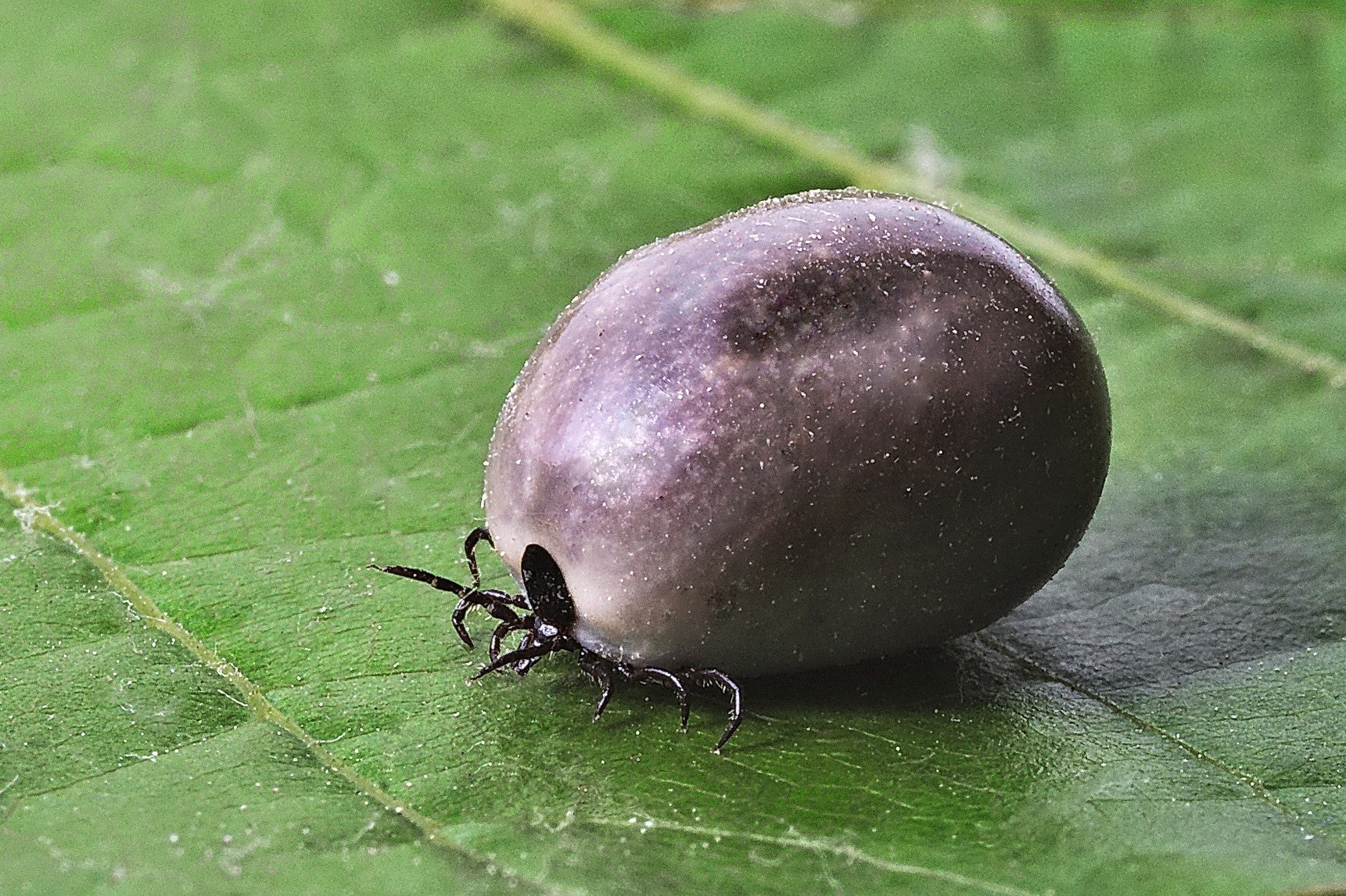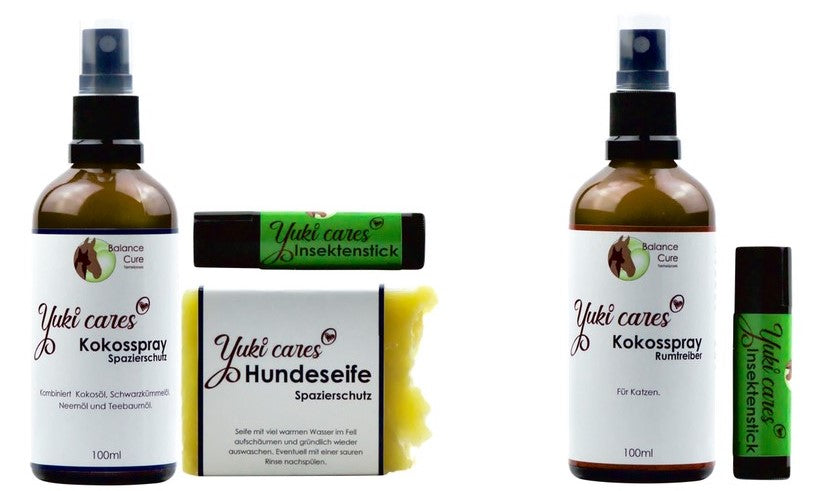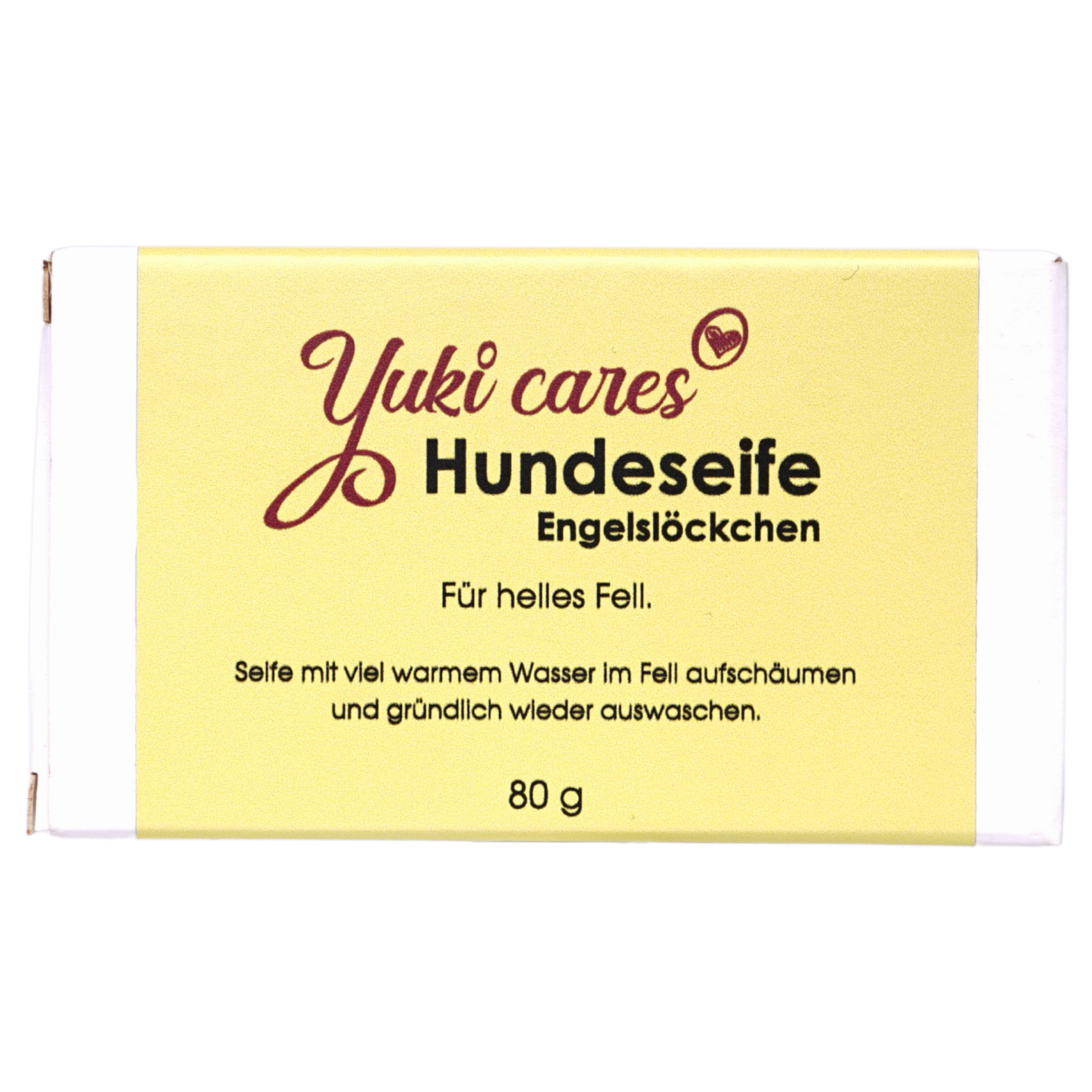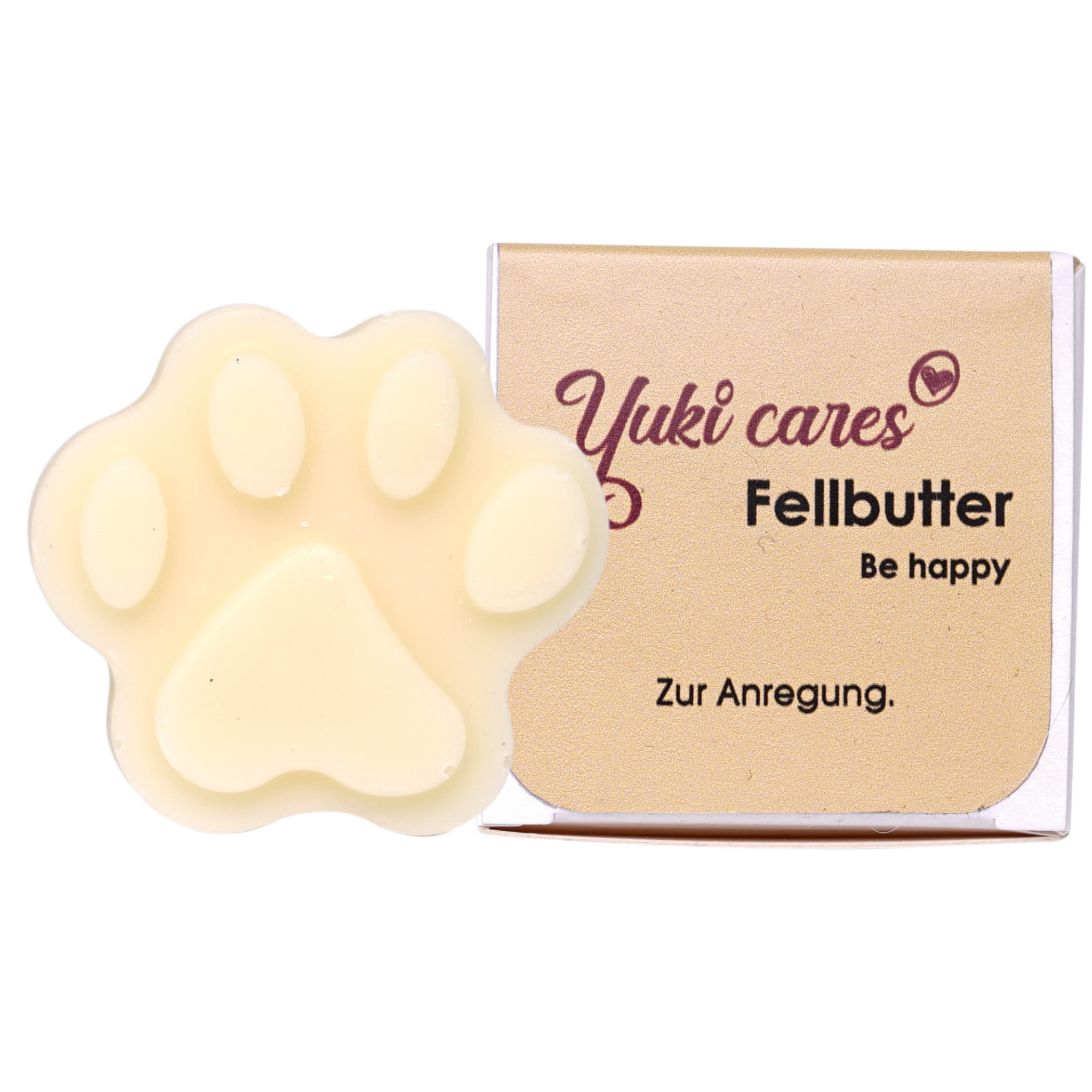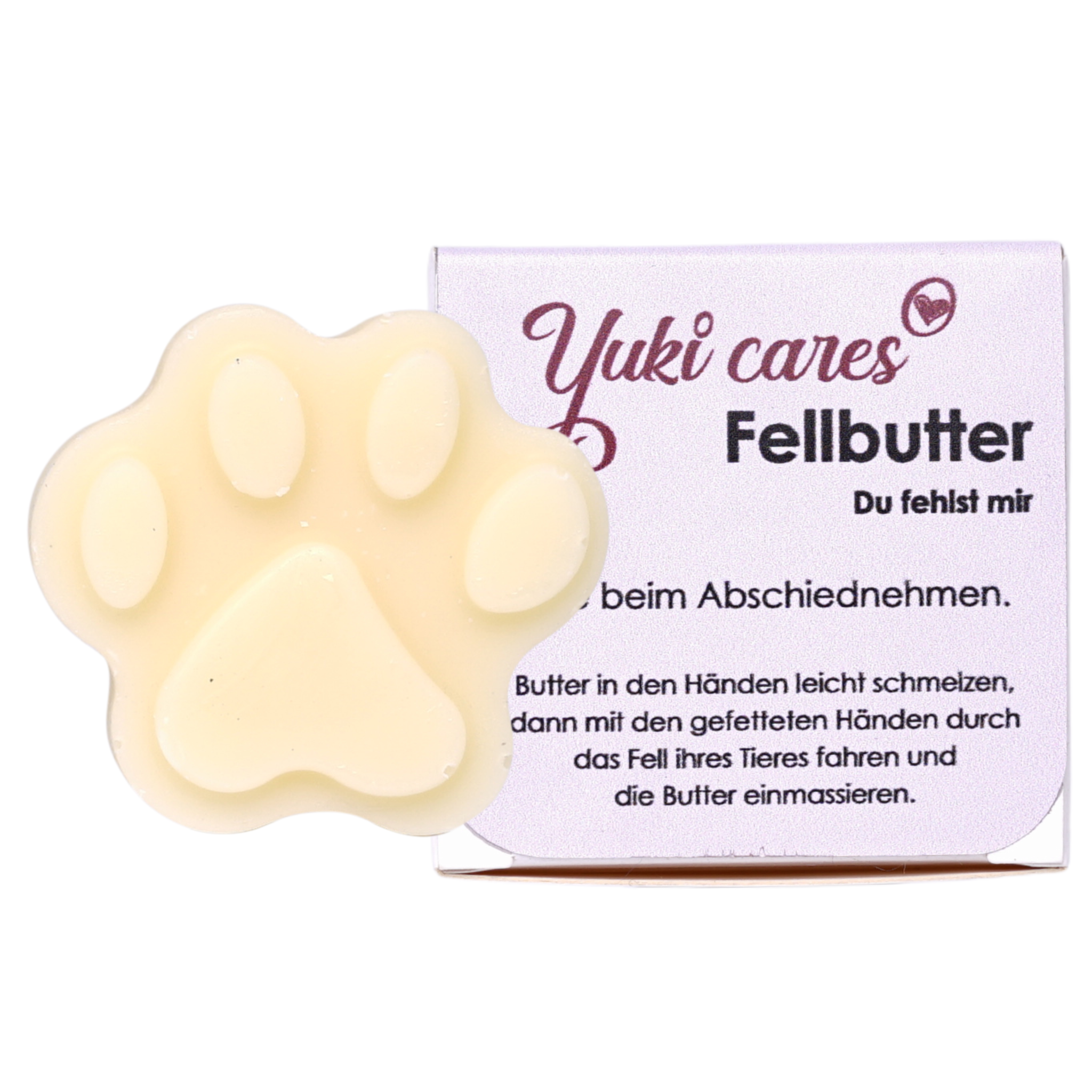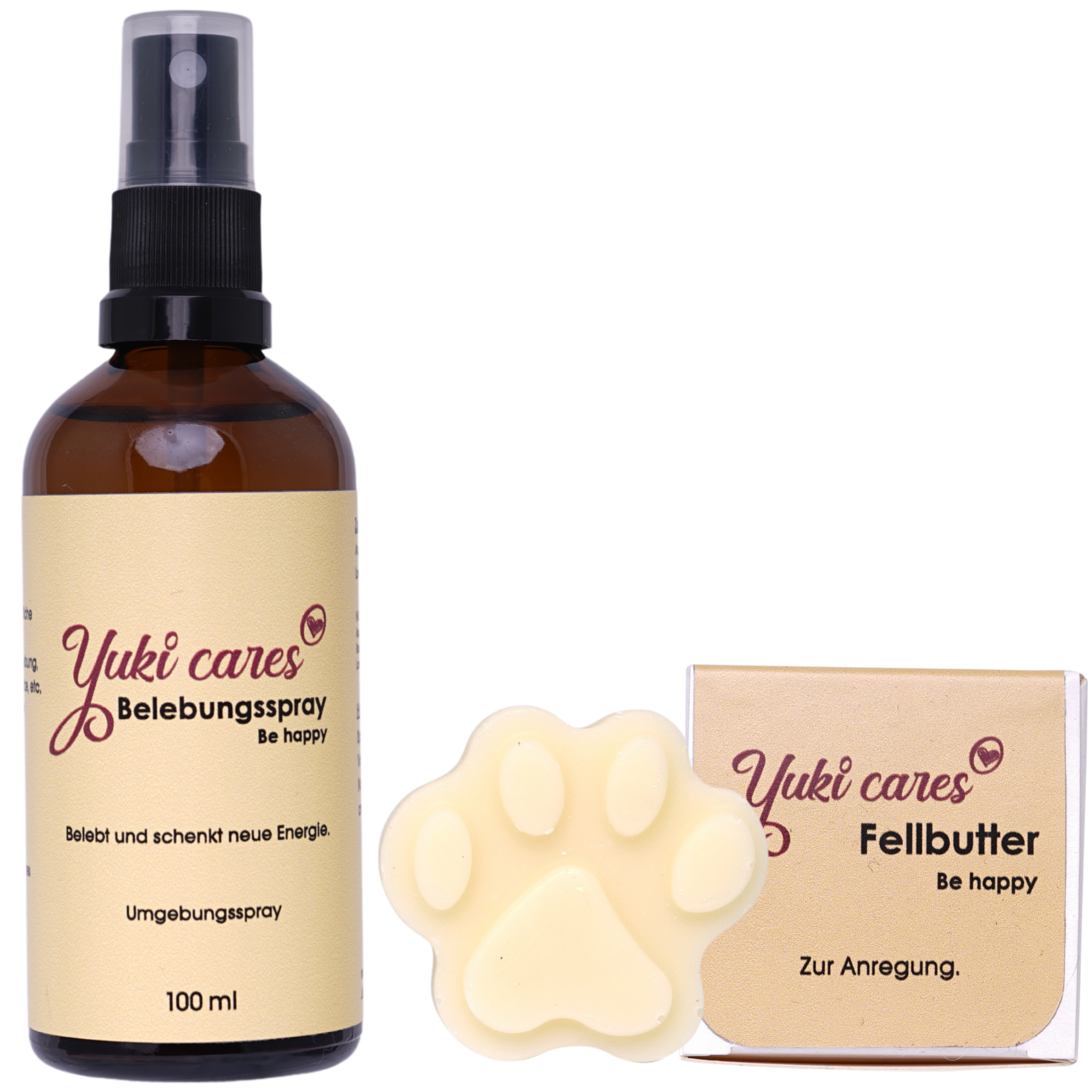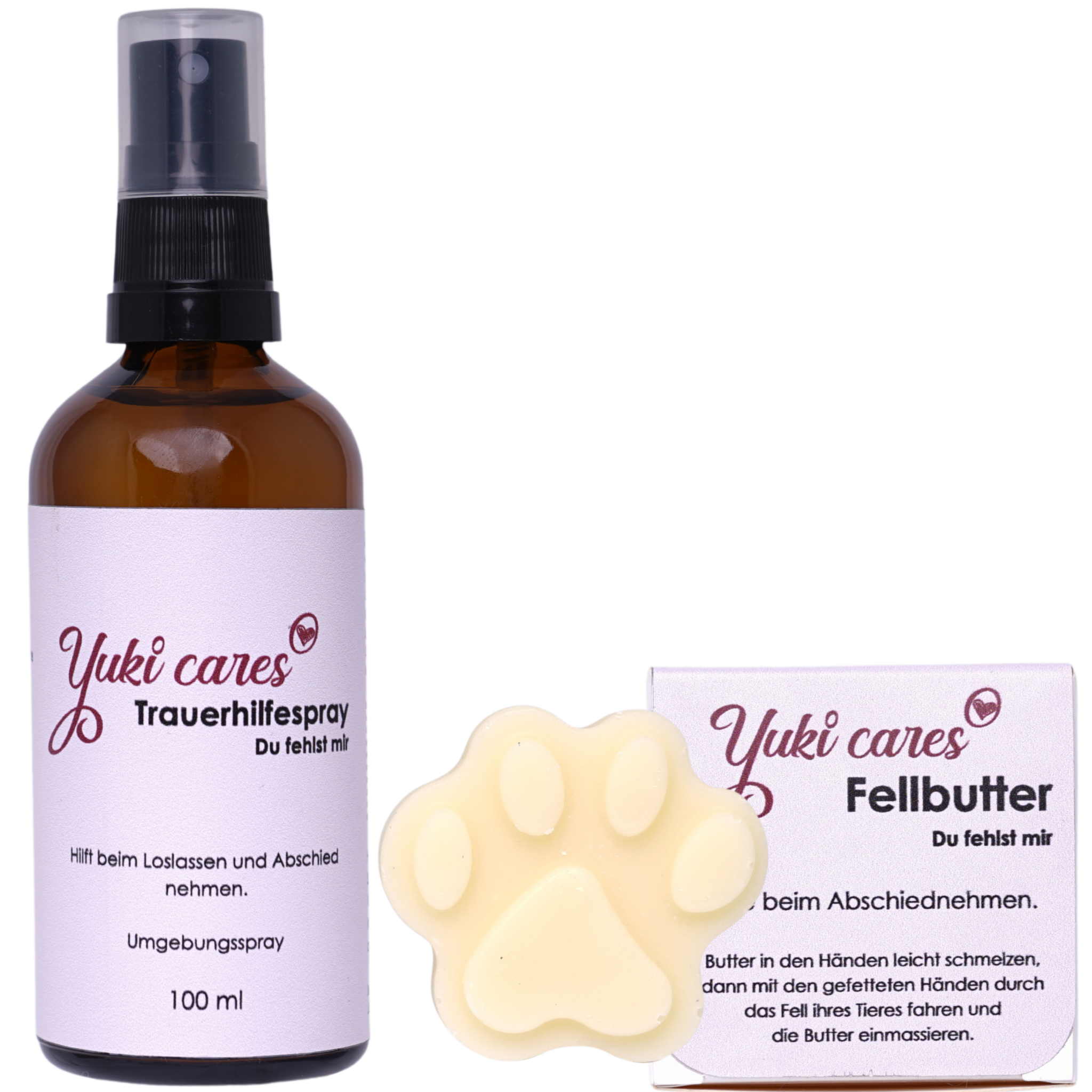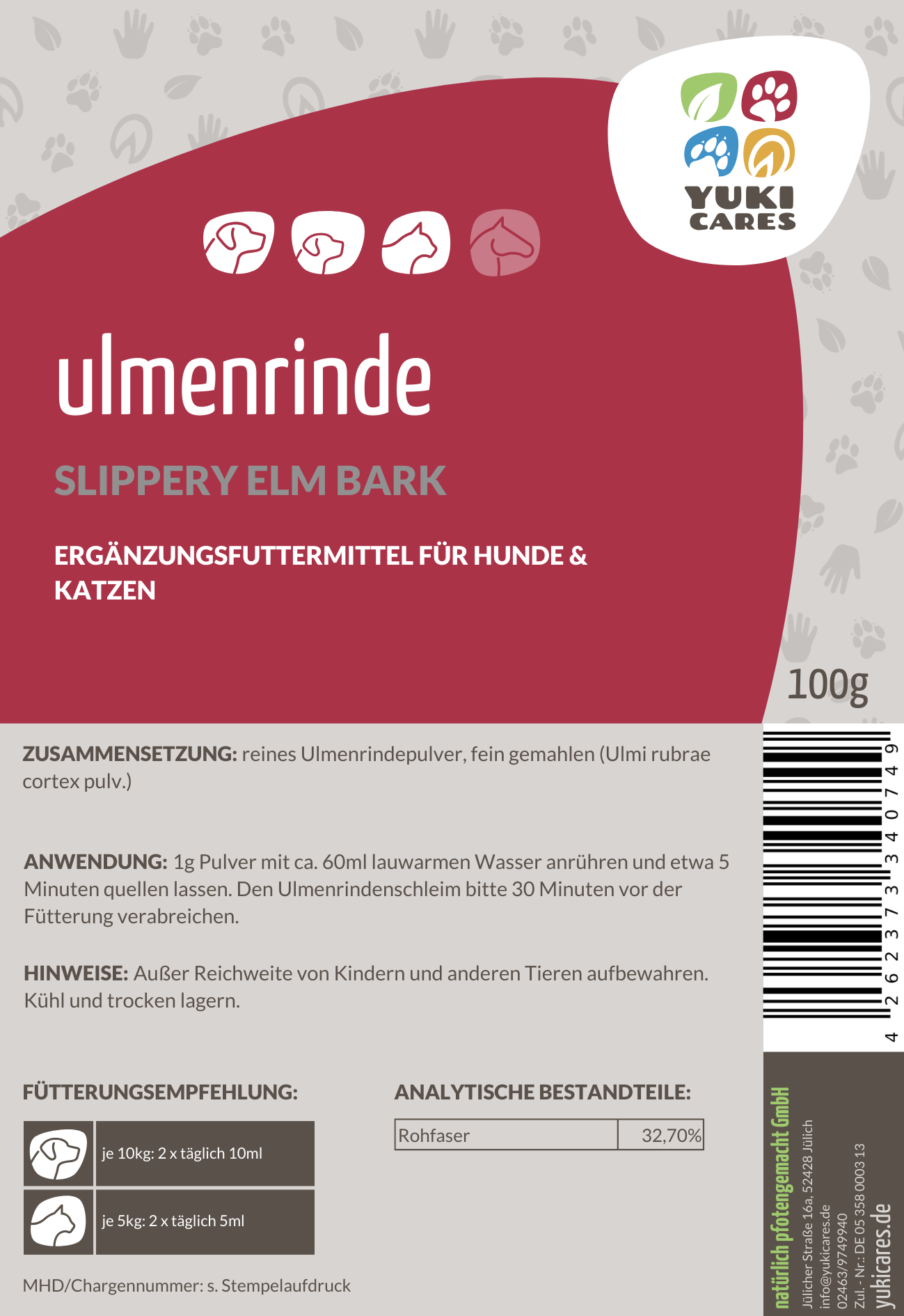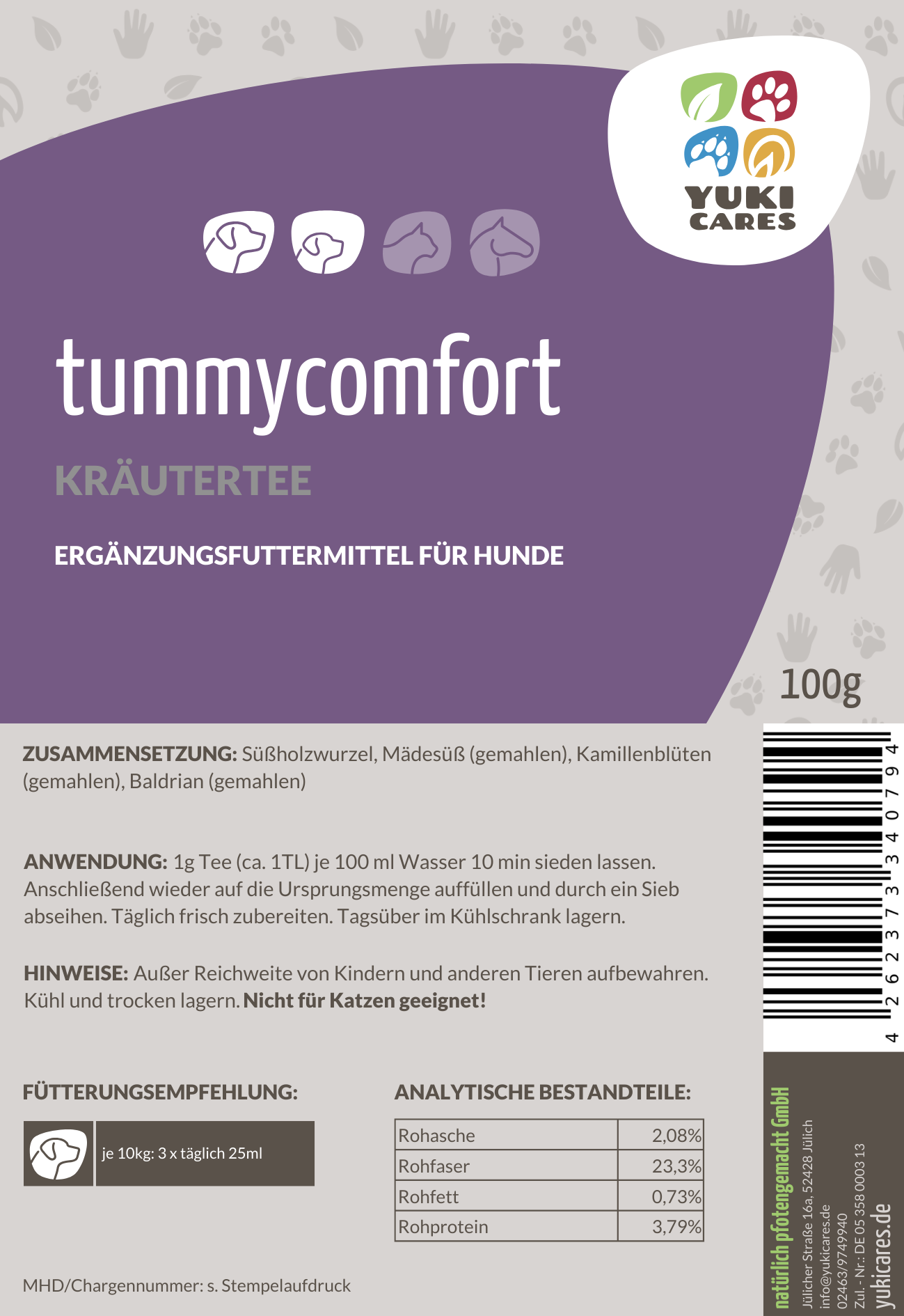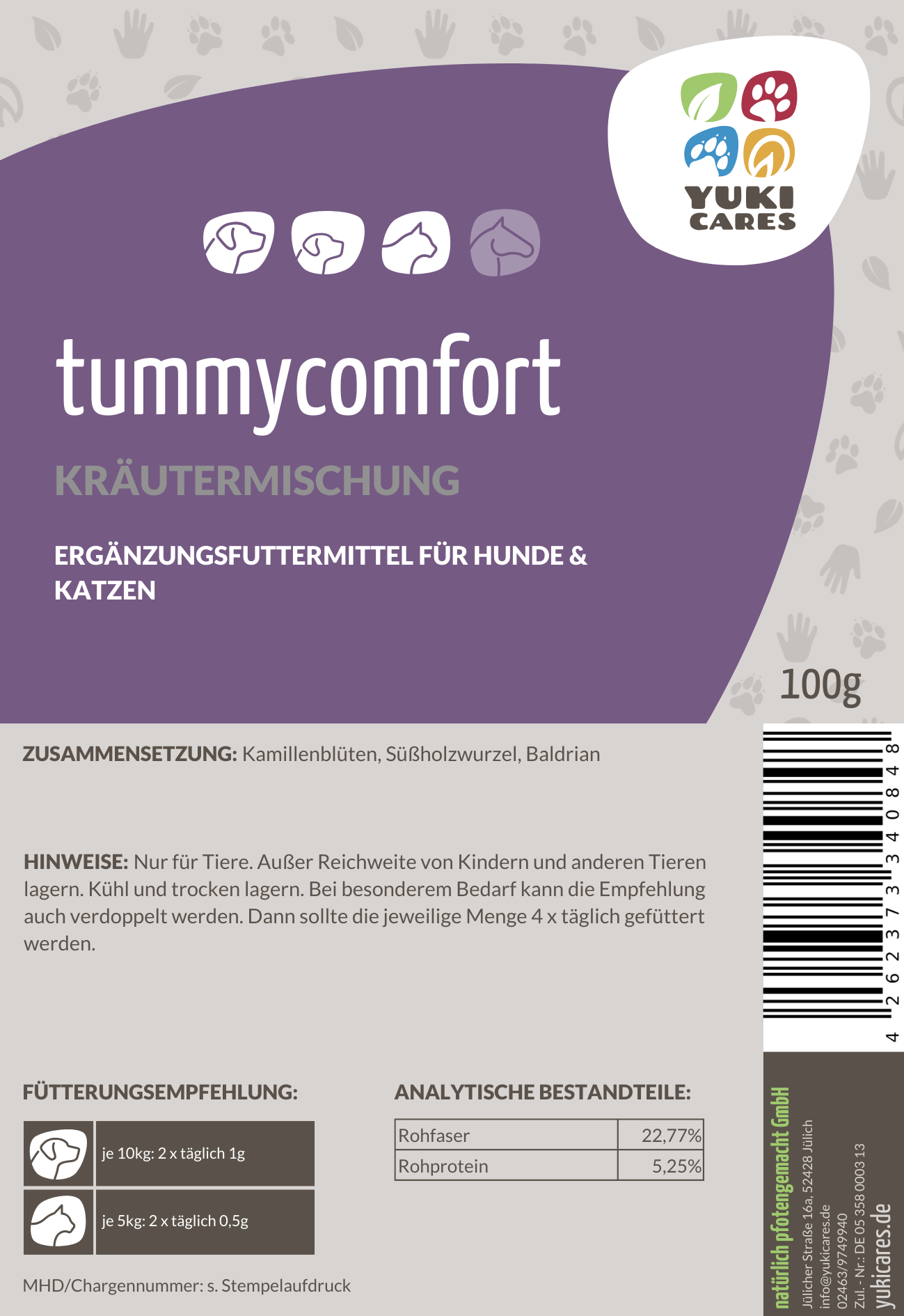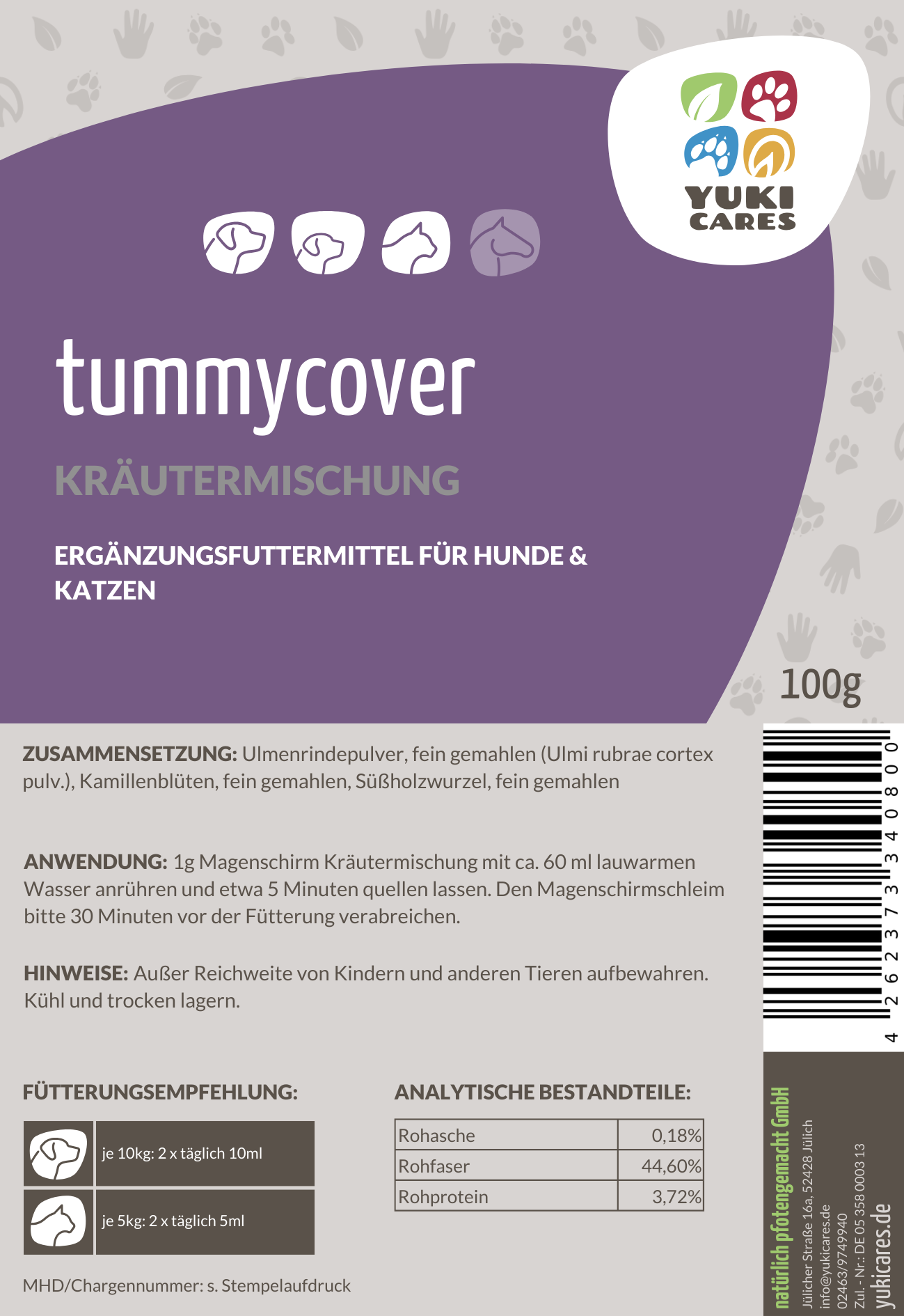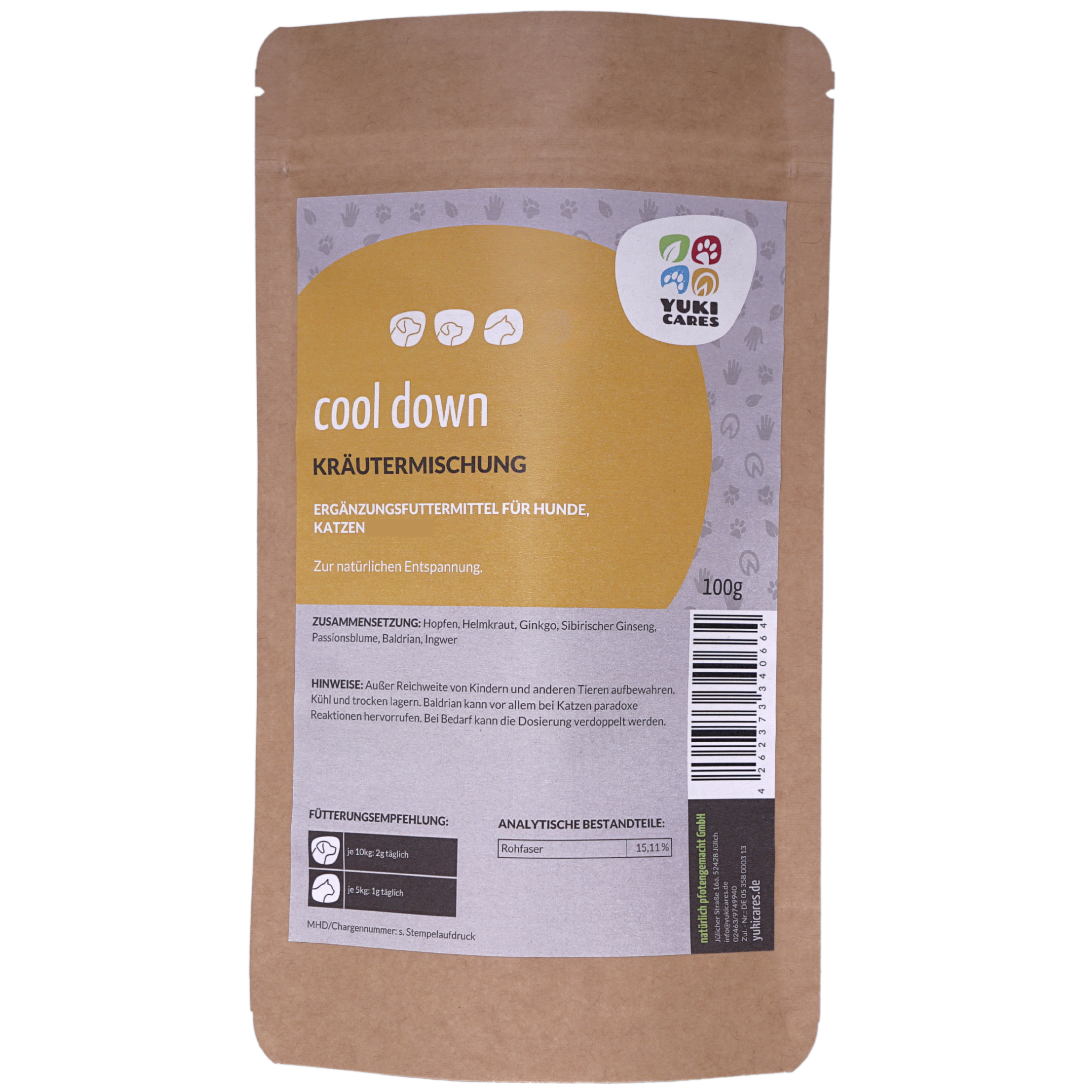 Spring is finally here, and our four-legged friends are spending more time outside again. But with sunshine and lots of walks in the fresh air and in the garden, unfortunately, the risk of dogs and cats becoming infected with ticks and other parasites also increases.
Spring is finally here, and our four-legged friends are spending more time outside again. But with sunshine and lots of walks in the fresh air and in the garden, unfortunately, the risk of dogs and cats becoming infected with ticks and other parasites also increases.
In this article, we explain the easiest way to remove a tick after it has bitten and how you can generally protect your pet from the transmission of tick-borne diseases.
Recognizing the tick
From larva to tick.
When to remove the tick
How to remove the tick
What you must not do
The head is still stuck – what do I do now?
Dispose of the tick
Treating the bite
When do I need to go to the vet?
Tick-borne diseases
What should I pay attention to in the next few days?
Protection for the future
How do I recognize a tick on my dog or cat?
You should check your pet for ticks at least once a day. The easiest way to incorporate this into your daily routine is while snuggling up on the couch in the evening. The first step is to brush out the fur, ideally right after letting your cat outside or after a walk with your dog, if you have time. Brushes are suitable for this, but for short-haired breeds, special tick and flea combs are also suitable. These are so fine that you can reach right down to the animal's skin, making the little monsters visible on the comb, allowing you to easily remove them.
You should also check your skin regularly, especially in areas where ticks are particularly prone to biting, as these are places where ticks can easily hide. Ticks like to settle on the ears, eyes, and nose, as well as in skin folds on the legs and stomach. They are usually only noticeable after they have been sucking blood for a while and are gradually becoming larger. 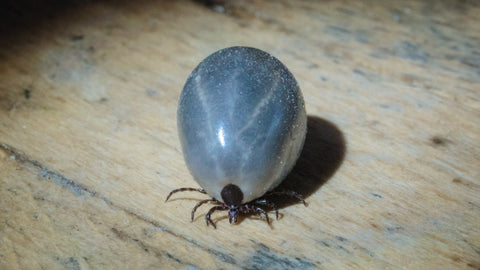 Most ticks are black or gray-brown spheres that resemble thick blisters and grow larger in a relatively short period of time. As they engorge themselves with blood, they usually become darker and appear as if they will burst at some point. They usually fall off the body after a while. Therefore, you should always keep an eye on carpets and living spaces and regularly check to make sure there are no ticks in the room.
Most ticks are black or gray-brown spheres that resemble thick blisters and grow larger in a relatively short period of time. As they engorge themselves with blood, they usually become darker and appear as if they will burst at some point. They usually fall off the body after a while. Therefore, you should always keep an eye on carpets and living spaces and regularly check to make sure there are no ticks in the room.
The development of a tick and the different stages of development


This is also the first time the tick has mated in its life. After the female has fallen off, she lays her eggs, from which up to 60,000 new larvae hatch. The mother then dies. The development from larva to nymph generally takes one summer, and from nymph to adult tick another summer. On average, it takes two years from larva to new mother tick, with the density usually increasing in two waves, once in spring and again in autumn. Ticks become active above 7 degrees Celsius; below that, they enter a state of hibernation. In our warm winters, this means that ticks can sometimes be found in varying population sizes throughout the year.
Protect your pet in time with our anti-tick products to prevent bites from occurring in the first place:
Anti-tick sets for cats , dogs and puppies .



Internal tick protection for the whole year for cats and small dogs up to 10kg , medium-sized dogs and large dogs from 30kg .
When should I remove the tick?
It's best to remove the tick as quickly as possible. But be careful! The tick should be clearly visible enough to ensure that you can pull the head and body completely out of the skin. A remaining head can cause infection.
How do I remove the tick?
 First, you should make sure you have easy access to the tick and don't pull out too much hair, as that would cause a tugging sensation. You should also hold your four-legged friend firmly. Removing ticks from dogs and cats works well with a loop, but tick cards, pliers, or tweezers are also excellent tools. Home remedies like oil or alcohol also pose a risk because they can cause the tick to release its intestinal contents, including all pathogenic substances, into the wound.
First, you should make sure you have easy access to the tick and don't pull out too much hair, as that would cause a tugging sensation. You should also hold your four-legged friend firmly. Removing ticks from dogs and cats works well with a loop, but tick cards, pliers, or tweezers are also excellent tools. Home remedies like oil or alcohol also pose a risk because they can cause the tick to release its intestinal contents, including all pathogenic substances, into the wound.
What options are there?
Many tools are used to remove ticks. Many animal lovers swear by tweezers. However, you need practice and there is a high risk that parts of the tick will remain inside the animal. You have to grab the tick by the chest, i.e. exactly where the head meets the engorged abdomen, otherwise there is a high risk of crushing it. Special tick hooks are also good for removing the tick completely from the dog with a little skill. If you have nothing else at hand, long fingernails will do the trick. You often have even more feeling with these than with tweezers and can safely pry the tick out of its bite. Your dog or cat will often feel less threatened when you use your fingers on the eye, because they are often already used to having their faces touched and, for example, cleaning dirt from their eyes.
Tick cards for humans and animals are available at pharmacies and garden centers. However, these aren't ideal for all areas, as the card isn't very flexible and can be difficult to use depending on the location of the parasite, for example, on the ear or eye.
What am I not allowed to do?

If the wound bleeds a little afterward, that's okay. In fact, any small tick remains will be flushed out, and the wound will be cleaned from the inside out.
Tips for the correct removal and destruction of the parasite?
- Do not use oils, essential oils, alcohol, glue, or heat directly on the tick on your animal.
- Hold the animal firmly, especially if it is new to tick removal or has had bad experiences.
- Pull the tick out straight and forcefully, without hesitation.
- Check for any residue left behind and try to remove it if necessary, but do not cause an even larger wound.
- Don't be alarmed if it bleeds a little. This will clean the wound from the inside out.
- Disinfect the bite area and monitor it over the next few days.
- And most importantly: Observe your dog or cat's general well-being over the next few days!
The head is still stuck – what do I do now?
If the tick couldn't be completely removed, you'll usually notice. Small black pieces, such as the proboscis or head, sometimes remain in the animal's skin if you weren't able to pull the tick out properly or if you crushed it in the attempt. If you still see black dots or larger remnants in the wound, you should try to remove them and disinfect the area. If the remnants are only small, the body usually takes care of this itself. However, if you're unsure, or if the area subsequently swells significantly and becomes warm, have a therapist take a look at it to be on the safe side.
How do I dispose of the tick?
After removing ticks from your dog or cat, you should disinfect the area and examine it thoroughly. You must also dispose of the tick properly, as it can still be viable even after removal.
Many people crush the tick or crush it in a cloth, after which you can simply dispose of it in the household waste or in the fire (oven, grill).  Simply flushing them down the toilet isn't a safe method, as ticks can survive underwater for up to 30 days. You can also drown the tick in alcohol. Many scientists recommend burning the parasites with a lighter to ensure they stop multiplying and are completely eliminated.
Simply flushing them down the toilet isn't a safe method, as ticks can survive underwater for up to 30 days. You can also drown the tick in alcohol. Many scientists recommend burning the parasites with a lighter to ensure they stop multiplying and are completely eliminated.
If the tick bit you, you can also send it to a laboratory to determine whether it might have transmitted anything to you. This way, treatment can begin during the incubation period. This is not usually done with animals.
Since last year, there have been increasing reports about the so-called giant tick, Hyalomma marginatum. Unlike our normal ticks, this tick actively approaches its host. If you encounter one, you can attach it to a piece of paper with adhesive tape and send it to the Robert Koch Institute. They welcome new specimens for examination.
How do I treat the bite now?
 You should definitely disinfect the area, regardless of whether the wound is large or not. You can use Yuki cares Silver Aid for this purpose. It consists of 100 percent colloidal silver with a concentration of 25 ppm. The colloidal silver contained in the silver aid consists of small, dissolved silver particles that have bonded with water to form a homogeneous mixture. It is often used not only in animals, but as a natural remedy in general, for wound healing and the cleansing of wounded areas.
You should definitely disinfect the area, regardless of whether the wound is large or not. You can use Yuki cares Silver Aid for this purpose. It consists of 100 percent colloidal silver with a concentration of 25 ppm. The colloidal silver contained in the silver aid consists of small, dissolved silver particles that have bonded with water to form a homogeneous mixture. It is often used not only in animals, but as a natural remedy in general, for wound healing and the cleansing of wounded areas.
The spray should not be used if it has been stored in an environment exposed to electromagnetic waves. Furthermore, the silver aid should not be used for more than three months after first use and after opening the bottle. While it cannot cause harm, it loses its effectiveness over time after opening.
 An alternative that's particularly suitable for aftercare is the Yuki cares insect stick . Enriched with blue chamomile, marjoram, lemongrass, tea tree oil, and cajeput, the sore area is quickly disinfected and soothed. Eucalyptus cools and prevents itching caused by the bite, preventing your pet from nibbling and reinfecting the bite. Shea butter, aloe vera, vitamin E, and D-panthenol nourish the skin and promote healing. The insect stick can be used at any time for tick bites, but is also suitable for flea bites or other insect bites. As a stick, it's ready to apply, making it the perfect first aid companion for walks and travels.
An alternative that's particularly suitable for aftercare is the Yuki cares insect stick . Enriched with blue chamomile, marjoram, lemongrass, tea tree oil, and cajeput, the sore area is quickly disinfected and soothed. Eucalyptus cools and prevents itching caused by the bite, preventing your pet from nibbling and reinfecting the bite. Shea butter, aloe vera, vitamin E, and D-panthenol nourish the skin and promote healing. The insect stick can be used at any time for tick bites, but is also suitable for flea bites or other insect bites. As a stick, it's ready to apply, making it the perfect first aid companion for walks and travels.
When do I need to go to the vet?
In most cases, removing a tick is not a serious problem, but the danger should not be underestimated and you should take every tick on your pet seriously.
However, if the area where the tick was attached changes significantly within a few days, you should definitely consult a veterinarian. A lumpy swelling often appears, which can persist for months and only slowly subside. This usually occurs when the remains of the tick are encapsulated by the body.
However, if the swelling on your dog's tick bite becomes hot and red, you should have a therapist take a look at it.
Often, local reactions in pets are not such a big deal, and the typical Lyme disease erythema migrans is hardly noticeable in dogs and cats. This is also because Lyme disease is not as common or severe in dogs and cats as it is in humans.
Cats don't seem to be very susceptible to most tick-borne diseases. These infectious diseases play a much more significant role in dogs. Especially if you notice the following symptoms within the next 14 days (often only a few hours), you should urgently consult a veterinarian, preferably directly at a veterinary clinic. Even if you haven't noticed a tick, please still raise the suspicion of a tick bite and babesiosis infection if your dog suddenly (within 24 hours) develops the following symptoms:
- Fatigue
- High fever
- Anemia
- Jaundice
- Ascites
- Mucosal inflammation
- Epileptic seizures or paralysis
What diseases can the tick transmit?
The bite and the associated infection can transmit dangerous diseases to your pet, such as babesiosis and ehrlichiosis. Health authorities provide information on areas at particular risk from tick infestations.
The significance of these diseases for our dogs and cats is different than for us humans. For humans, for example, TBE and Lyme disease pose the greater threat. For our animals, it's babesiosis, ehrlichiosis, and hepatozoonosis. A list of all tick-borne diseases, their treatment options, and the effectiveness of tick vaccinations can be found in this article .
What should I pay attention to in the next few days?
 After removing ticks from dogs and cats, you should check your pet regularly for 14 days to see if they are showing any symptoms or if any visible skin changes are noticeable. Symptoms such as fatigue, fever, non-specific inflammation, diarrhea, and muscle and joint problems should be especially alert. All of these can be caused by tick-borne diseases and should be checked out. Feel free to express your suspicions directly to your vet; this will save a lot of time in diagnostics if in doubt. The significance of these diseases is increasing as the tick population grows. However, many veterinarians, especially those in smaller or urban practices, have not necessarily encountered such a case themselves and do not immediately connect the symptoms. Especially not if the time of year might not yet suggest ticks, because we are still used to them only being active in the summer.
After removing ticks from dogs and cats, you should check your pet regularly for 14 days to see if they are showing any symptoms or if any visible skin changes are noticeable. Symptoms such as fatigue, fever, non-specific inflammation, diarrhea, and muscle and joint problems should be especially alert. All of these can be caused by tick-borne diseases and should be checked out. Feel free to express your suspicions directly to your vet; this will save a lot of time in diagnostics if in doubt. The significance of these diseases is increasing as the tick population grows. However, many veterinarians, especially those in smaller or urban practices, have not necessarily encountered such a case themselves and do not immediately connect the symptoms. Especially not if the time of year might not yet suggest ticks, because we are still used to them only being active in the summer.
How can I protect my animal in the future?
You should protect your pet continuously during tick season. In this article, Katrin introduces you to the various preventative measures.
 We recommend Yuki cares ' coconut spray as a proven combination of natural home remedies. It also makes combing easier without causing oily or stringy fur, as can be the case with pure coconut oil.
We recommend Yuki cares ' coconut spray as a proven combination of natural home remedies. It also makes combing easier without causing oily or stringy fur, as can be the case with pure coconut oil. 
It should be applied immediately before a walk or a romp in the garden and will then protect against parasites and insects. There is a special coconut spray for cats that does not contain essential oils.
Generally, regular checking after a walk or outdoor activity is the best way to protect your pet, even if various measures have been taken beforehand. Ticks that have just fallen off grass or bushes can simply be picked off. It usually takes up to eight hours before they find a suitable bite site. These bites are often found where the fur gives way: around the eyes, ears, nose, lips, armpits, or groin. We're regularly amazed at how the ticks have worked their way through Yuki's thick collar and onto her neck. So, really, no spot is safe.
And please don't forget yourself in all this searching! Before going to bed, check your groin, between your buttocks, the backs of your knees, the insides of your elbows, armpits, ears, scalp, and so on .
We have put together summer protection value sets for dogs and cats :
Text by Balance Cure Animal Health Practice & Textbroker / Texter_1002
Photos by Balance Cure Animal Healing Practice & Pixabay
This text contains affiliate links (*)
Through these links, we recommend certain products and may earn a commission. The products don't cost any more, we promise.
If you would like to be regularly informed about new blog articles, simply sign up for our newsletter below!

